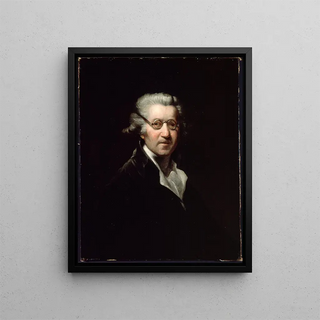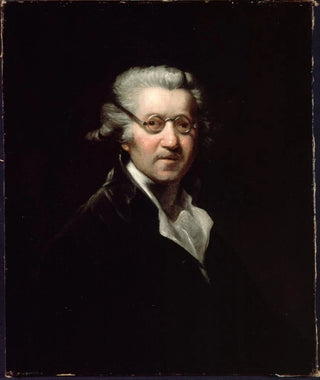Art print | Self-portrait 2 - Sir Joshua Reynolds


View from behind

Frame (optional)
Sir Joshua Reynolds' Self-Portrait 2 is an iconic artwork that transcends the simple frame of the self-portrait to become a true exploration of identity and creativity. Through this painting, Reynolds invites us to delve into his artistic universe, revealing not only his face but also his soul as an artist. The piece, vibrant with colors and rich in textures, captures attention through its intensity and psychological depth. As a major figure of the 18th century, Reynolds does not merely depict his appearance; he unveils himself in all his complexity, making this artwork a poignant testament to his era and his genius.
Style and uniqueness of the work
The Self-Portrait 2 stands out for its characteristic style, where light and shadow dance across the canvas, creating a striking sense of volume. Reynolds, master of chiaroscuro, uses this technique to emphasize the features of his face, while infusing his gaze with an almost palpable life. The color palette, both rich and nuanced, demonstrates his skill in playing with tonalities, making the work both warm and intimate. The choice of clothing, luxurious yet understated, reflects his status as a court painter while highlighting his personal identity. The artist does not merely seek to represent himself but to convey an emotion, a reflection on art and beauty, making this self-portrait a key piece of his artistic legacy.
The artist and his influence
Sir Joshua Reynolds, born in 1723, is one of the most influential figures in British painting. As the first president of the Royal Academy, he played a decisive role in establishing the artistic standards of his time. His innovative approach, blending classicism with romantic sensitivity, paved the way for many artists who followed him. Reynolds was also a fervent advocate of the idea that art should be accessible and educational, which is reflected in his portraits that capture not only physical appearance but also the character and personality of the subjects. His influence endures today, inspiring generations of artists to explore the limits of artistic expression and to question

Matte finish

View from behind

Frame (optional)
Sir Joshua Reynolds' Self-Portrait 2 is an iconic artwork that transcends the simple frame of the self-portrait to become a true exploration of identity and creativity. Through this painting, Reynolds invites us to delve into his artistic universe, revealing not only his face but also his soul as an artist. The piece, vibrant with colors and rich in textures, captures attention through its intensity and psychological depth. As a major figure of the 18th century, Reynolds does not merely depict his appearance; he unveils himself in all his complexity, making this artwork a poignant testament to his era and his genius.
Style and uniqueness of the work
The Self-Portrait 2 stands out for its characteristic style, where light and shadow dance across the canvas, creating a striking sense of volume. Reynolds, master of chiaroscuro, uses this technique to emphasize the features of his face, while infusing his gaze with an almost palpable life. The color palette, both rich and nuanced, demonstrates his skill in playing with tonalities, making the work both warm and intimate. The choice of clothing, luxurious yet understated, reflects his status as a court painter while highlighting his personal identity. The artist does not merely seek to represent himself but to convey an emotion, a reflection on art and beauty, making this self-portrait a key piece of his artistic legacy.
The artist and his influence
Sir Joshua Reynolds, born in 1723, is one of the most influential figures in British painting. As the first president of the Royal Academy, he played a decisive role in establishing the artistic standards of his time. His innovative approach, blending classicism with romantic sensitivity, paved the way for many artists who followed him. Reynolds was also a fervent advocate of the idea that art should be accessible and educational, which is reflected in his portraits that capture not only physical appearance but also the character and personality of the subjects. His influence endures today, inspiring generations of artists to explore the limits of artistic expression and to question






